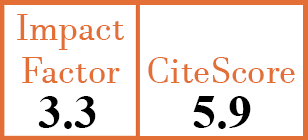Full Papers
Skin biopsy analysis of concurrent keloidal morphoea and systemic sclerosis confirms overlapping pathogenic pathways
K.E. Clark1, N. Gak2, C.H. Orteu3, V.H. Ong4, E.C. Derrett-Smith5, C.P. Denton6
- Centre for Rheumatology, Division of Medicine, University College London, UK.
- Centre for Rheumatology, Division of Medicine, University College London, UK.
- Department of Dermatology, Royal Free London NHS Foundation Trust, London, UK.
- Centre for Rheumatology, Division of Medicine, University College London, UK.
- Centre for Rheumatology, Division of Medicine, University College London, UK.
- Centre for Rheumatology, Division of Medicine, University College London, UK. c.denton@ucl.ac.uk
CER16633
2023 Vol.41, N°8
PI 1644, PF 1651
Full Papers
Free to view
(click on article PDF icon to read the article)
PMID: 37223904 [PubMed]
Received: 01/03/2023
Accepted : 26/04/2023
In Press: 23/05/2023
Published: 03/08/2023
Abstract
OBJECTIVES:
Although localised forms of scleroderma (morphoea) have very different clinical features and outcomes from systemic sclerosis the two conditions can occur together in some patients. In this study we have explored skin gene expression in a series of patients with keloidal morphoea, a distinct clinical variant, concurrently with systemic sclerosis.
METHODS:
We compared skin gene expression from the keloidal lesions with that from skin elsewhere. We also examined a series of patients with diffuse or limited cutaneous SSc without morphoea and some healthy control skin biopsies.
RESULTS:
Keloidal morphoea has a distinct gene expression signature that is mainly driven by differential expression of fibroblast-related genes compared with other cell types. Indeed, the signature reflects a profibrotic pattern seen in diffuse cutaneous SSc but is much more extreme. We propose that keloidal morphoea skin provides unique insight into the profibrotic population of cells driving dcSSc.
CONCLUSIONS:
Understanding the biology of keloidal morphoea may give valuable insight into the molecular and cellular pathology of systemic sclerosis. The discrete nature of keloidal lesions raises the possibility of haematogenous spread and we suggest that the driving cells could represent blood derived cells derived from circulating progenitors.


